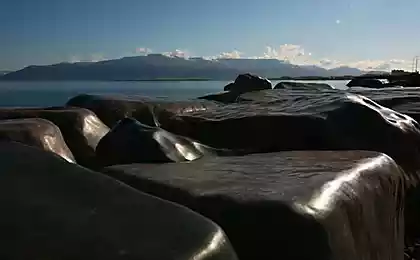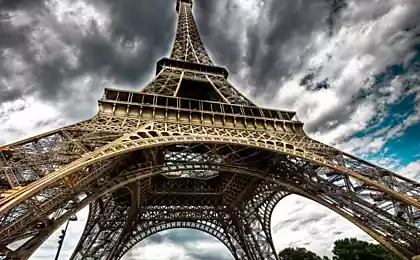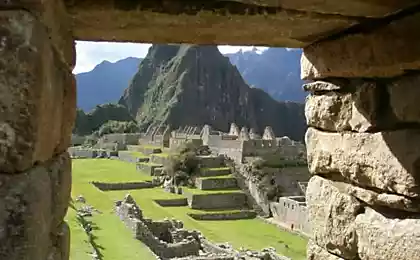768
Things to do for tourists of the future
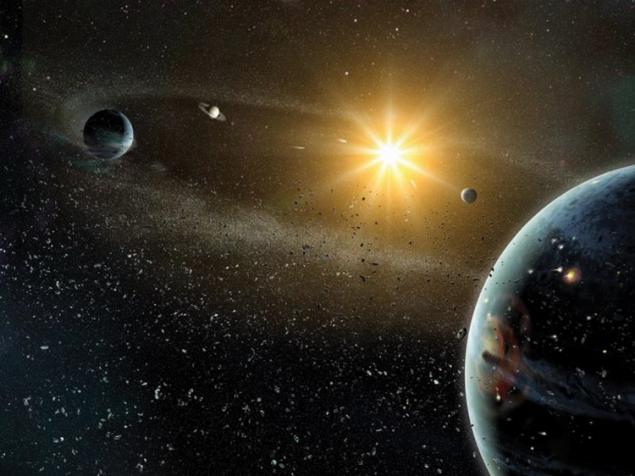
People like to make lists of all sorts of interesting phenomena, interesting animals or, for example, structures with unique properties - "10 longest rivers", "5 the fastest animal on the planet", "15 best-paid rock musicians," and so on. The apotheosis of the human desire to bring together all the "thing-thing" can be considered "Guinness World Records", which is published for more than half a century, and all this time enjoyed sustained popularity. It should be noted that the drawing up of lists of any phenomena - a long tradition: one of the first of these collections, appeared in ancient Greece, in the V-th century BC, its authorship is credited with the famous Herodotus of Halicarnassus (Ἡρόδοτος Ἁλικαρνᾱσσεύς (see. "Seven Wonders of the Ancient World »).
Other Greek thinkers were their versions of these lists - for example, there was a work entitled "The collection, or list of wonders of the earth," authored by the poet and bibliographer Callimachus of Cyrene (Καλλίμαχος. Unfortunately, what was contained in his manuscripts, known as either one instance of it has been preserved - most likely, the original and copies (if they were) killed in the fire, which destroyed the Library of Alexandria.
Lists compiled by ancient and medieval writers tend to include objects created by man, but nowadays more and more popularity gaining a selection of natural phenomena, such as the Grand Canyon, Mount Everest, the Great Barrier Reef, Victoria Falls - can complement this a list of the variants of the most interesting sights of our planet.
What about the Solar System? After all, on other planets, it probably is, objects of natural origin, which can compete with terrestrial wonders for the title of the most striking natural phenomenon. Of course, compiling a complete list of the wonders of the solar system is quite a time consuming task, simply because other planets, and even more so, their satellites are not well understood. However, some information about interesting objects in the solar system humanity still there, so now we can make up their own versions of the lists of cosmic attractions.
Several dozen astronomers, astronauts, authors of science fiction and artists have tried to answer the question: "What will be placed on postcards and in guidebooks for intergalactic travelers hundreds of years?". List referred to miracles includes more than seventy objects and phenomena suggest you familiarize yourself with the rating of the most popular ones.
1. The rings of Saturn
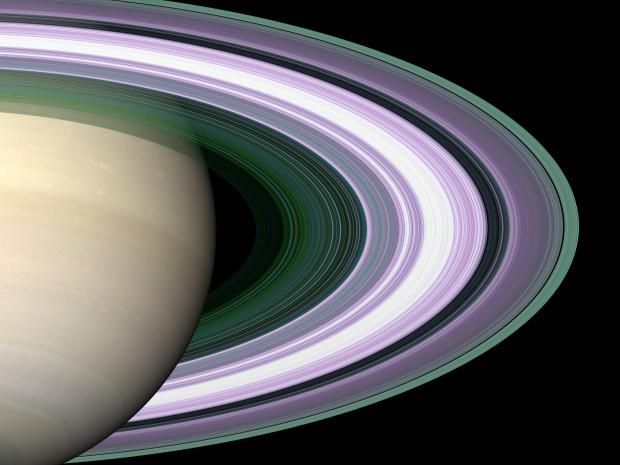
At the top of the rankings Wonders of the Solar System have settled the rings of Saturn. Flat concentric formation of the sixth planet of the solar system account for centuries excite the minds of scientists and amateur astronomers. There are several hypotheses that scientists are trying to explain their formation, the best thing about the reasons for the interest of humanity to the rings of Saturn spoke one of the survey participants, the science fiction writer Ben Bova: "They are beautiful and mysterious».
2. The volcano Olympus Mars
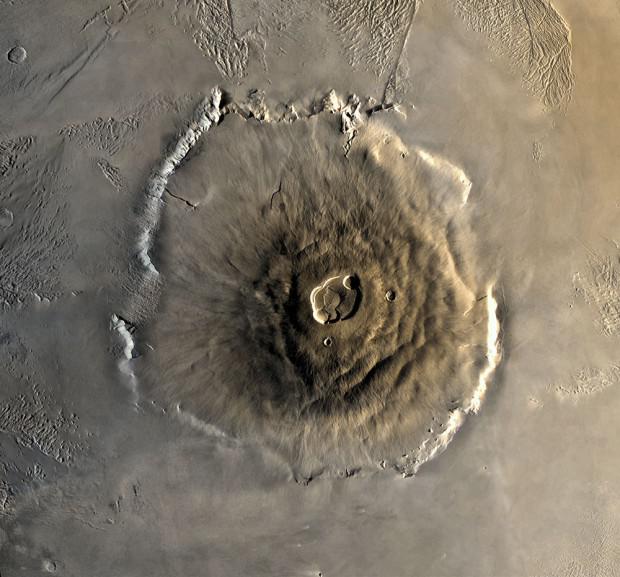
Second place is deservedly got a giant extinct volcano Olympus - the highest of the currently known mountain in the solar system, with it is located on the Red Planet, which by the standards of such giants like Jupiter or Saturn, is quite compact. The height of the volcano, named after the legendary abode of the Greek gods, is 21, 2 km from the base, that is, the Olympus is more than two times higher than the highest terrestrial volcanoes - Mauna Kea, its height from the base numbers 10, 2 km away. "This is the only known mountain, which literally pierces the atmosphere of the planet" - writes about Olympus Dan Dorda, a member of the Southwestern Research Institute (San Antonio, Texas).
3. Great Red Spot, Jupiter

Curious formation of atmospheric astronomers observe more than three and a half centuries. Its dimensions of earthly measures just horrible - from 24 thousand to 40 thousand kilometers in width and from 12 thousand to 14 thousand kilometers in length, which is significantly larger than our planet. In fact, the Great Red Spot - a huge hurricane-anticyclone, it is the largest of this kind of atmospheric phenomena in our planetary system.
4. Valles Marineris, Mars
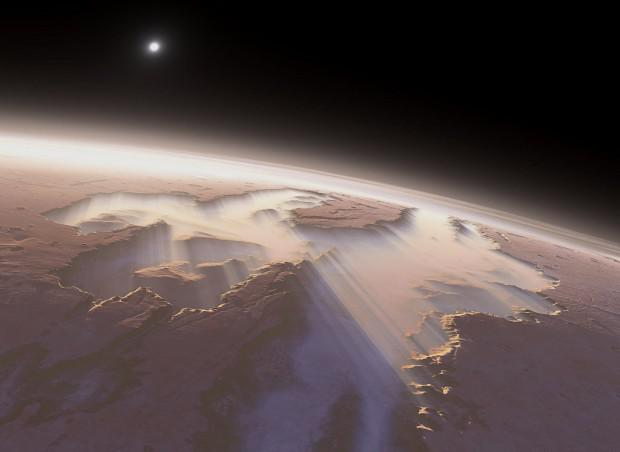
Compared with the Martian canyon system, named after the spacecraft "Mariner 9", images which opened this huge education for earthbound astronomers, the American Grand Canyon seem a small ravine. "Dimensions" Dales truly awesome - their length is 4, 5 thousand km, width of 200 km and reaches a depth of 11 km, for comparison, the corresponding figures of one of the main attractions of the United States: 446 km, 29 km, 1, 8 km. Probably, if the Americans landed on the Red Planet, then immediately planted about martian miracle cashier, who will take money from tourists for visiting the Valles Marineris.
5. Volcanoes Io
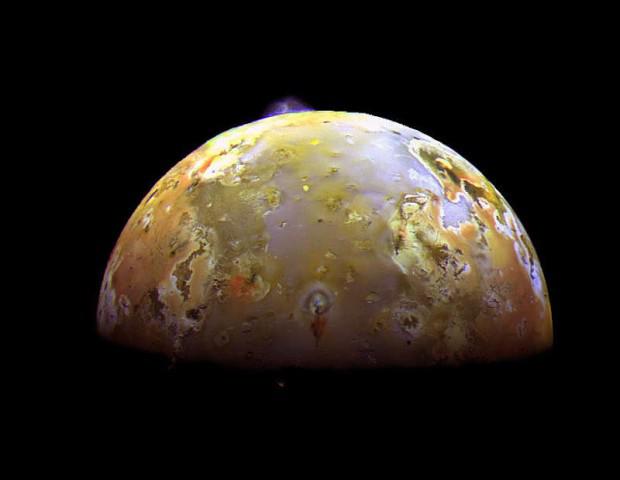
According to astronomers, Io - the most geologically active body in the heaven of our planetary system: on Jupiter are about 400 active volcanoes, the most active of which is considered a super-volcano Pele, surrounded by a huge ring of sulfur compounds and other products of its volcanic activity. The height of the ring is 300 km, diameter - about 1, 2 thousand km.
Attractions of the first "five" were able to determine quite easily - they are in the lead with a noticeable separation from the rest, but with different rankings is not so clear. Among them are competing for the objects and phenomena is not pronounced the winners, but these phenomena are certainly worth mentioning:
6. Ice peaks Callisto
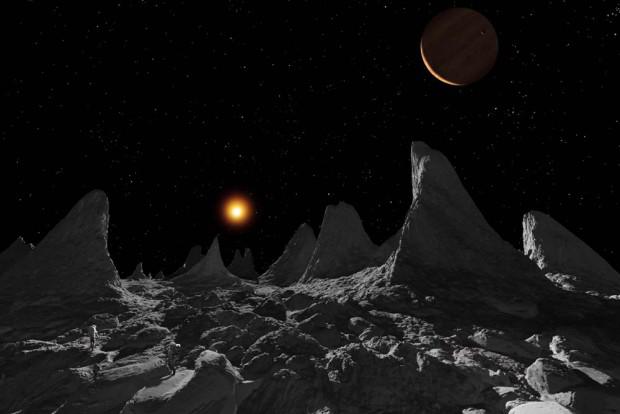
By the number of impact craters Callisto is considered to be the champion of all the objects in the solar system. In addition, the formation of ice of Jupiter's moon, imprinted spacecraft "Galileo" is unique - on any heavenly body of our planetary system has not yet found anything like this.
7. The step Verona
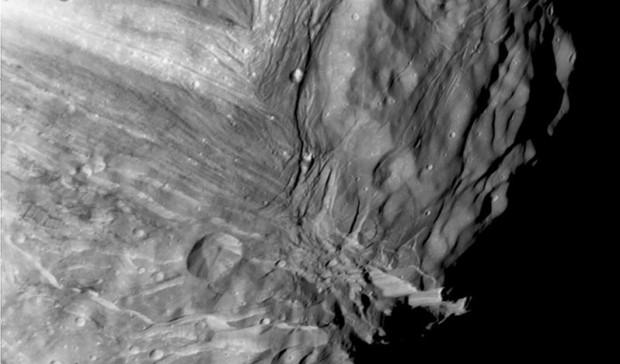
A huge rock at Miranda, one of the moons of Uranus. In comparison with the tiny size of the satellite bench height is incredible - according to various estimates, it reaches from 5 km to 20 km, ie about 3% of the diameter of Miranda.
8. sunrise and sunset on Mercury
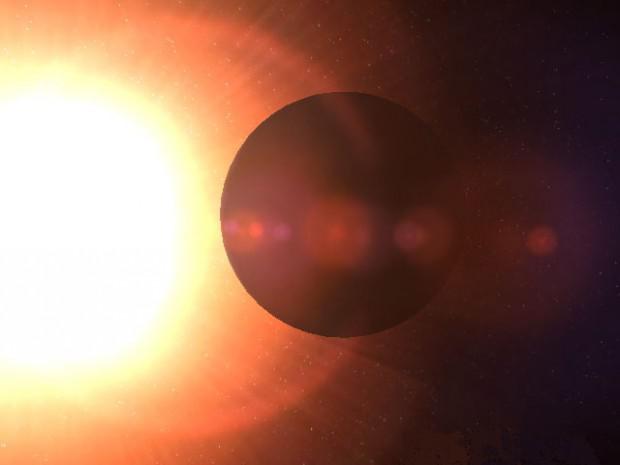
Because of the motion of the planet in its orbit, at certain times in the sky of Mercury observed interesting astronomical phenomenon - if the sun stops and starts moving in the opposite direction. As a result, a hypothetical viewer located at a certain longitude planet may enjoy double sunrises and sunsets over Mercury - this phenomenon is also known as the effect of Joshua.
9. Mountain Ring Iapetus
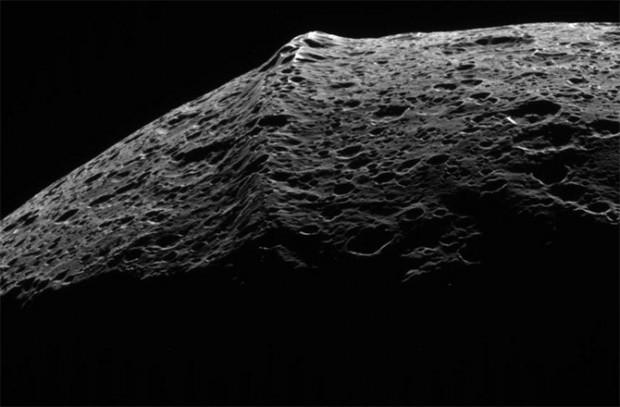
Quite a massive mountain range surrounds a small moon of Saturn's equator, with astronomers still do not know how on the surface of Iapetus was this huge mountain range.
10. Asteroid Hector
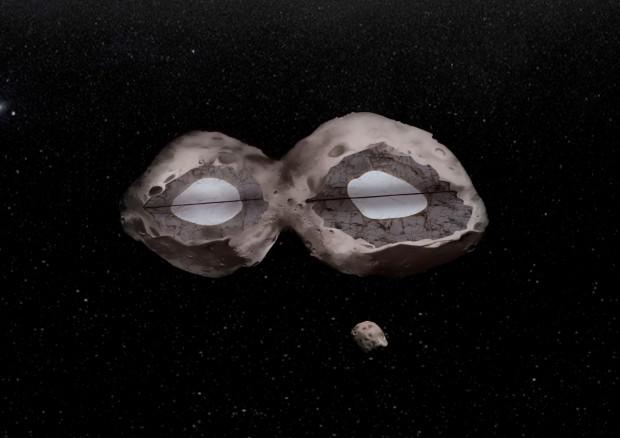
The unique celestial body, one of the largest asteroids of the solar system.
11. Herschel Crater
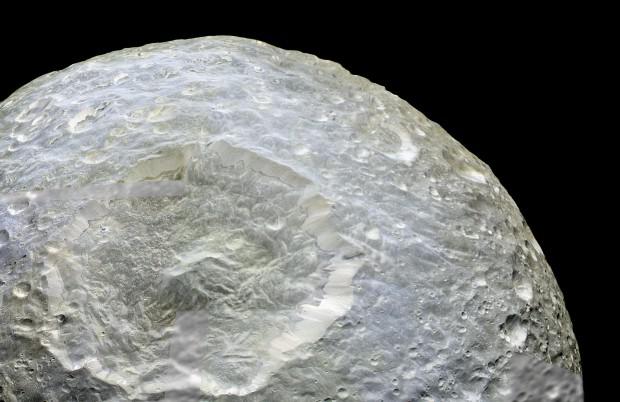
Dimensions impact crater located on Mimas, one of Saturn's moons relative to the magnitude of a celestial body are enormous: the diameter of Herschel is one fifth of the diameter of Mimas.
12. The methane lakes of Titan
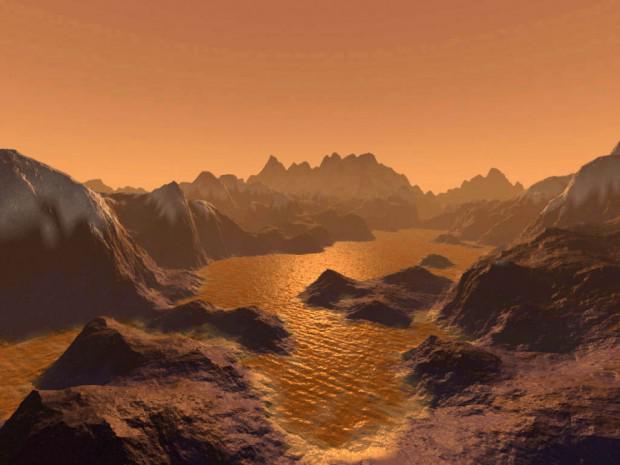
Currently, Titan, the largest moon of Saturn, is the second object of the Solar System (after the Earth), which is present on the surface of the liquid.
13. The geysers of Enceladus
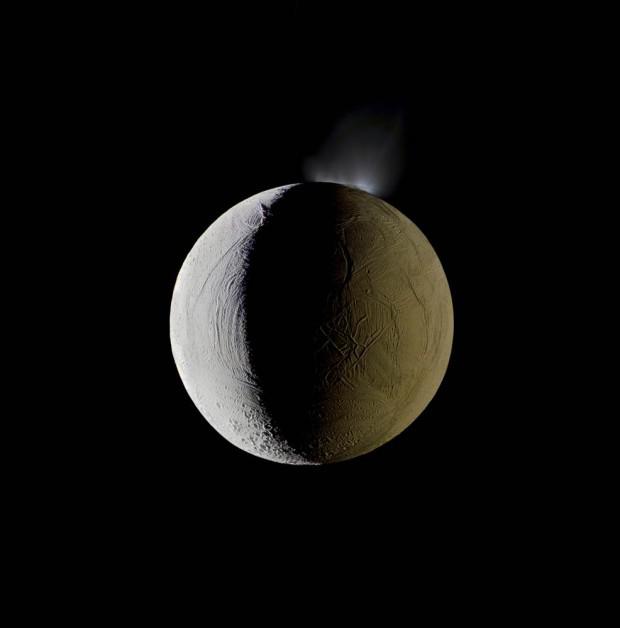
Ice geysers spew water vapor and dust to a height of several hundred kilometers. Due to the extremely low power of attraction of Saturn's atmosphere is constantly escapes it, but thanks to the strong support of geysers its density remains virtually unchanged.






